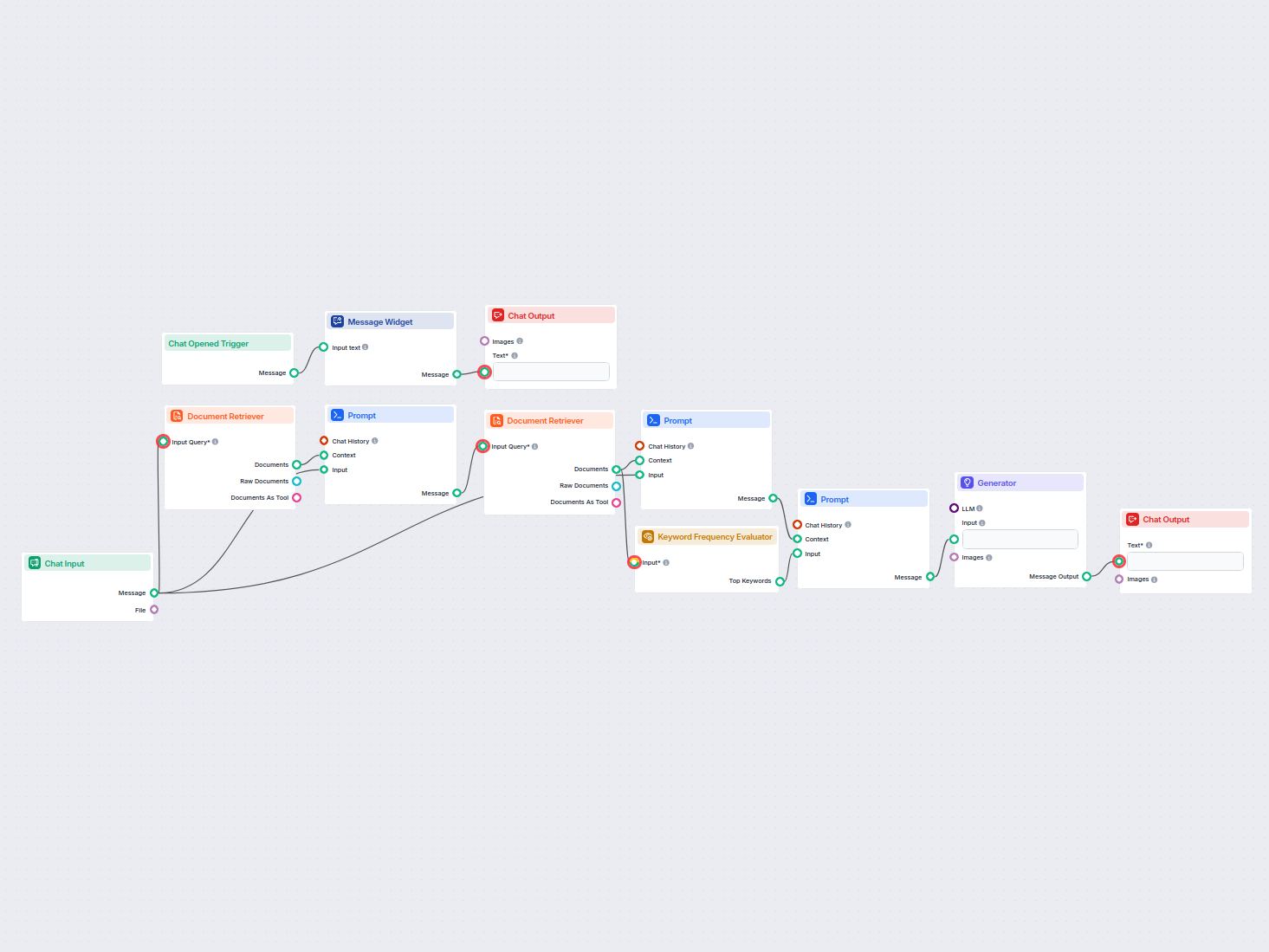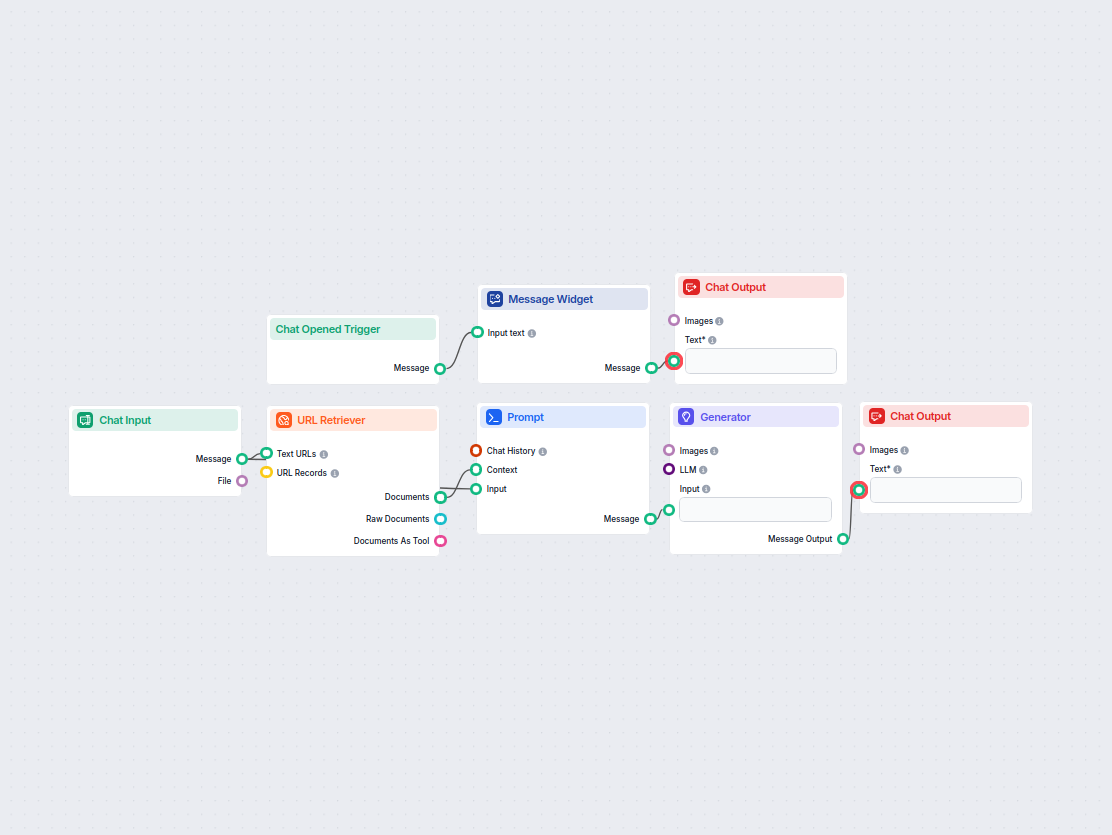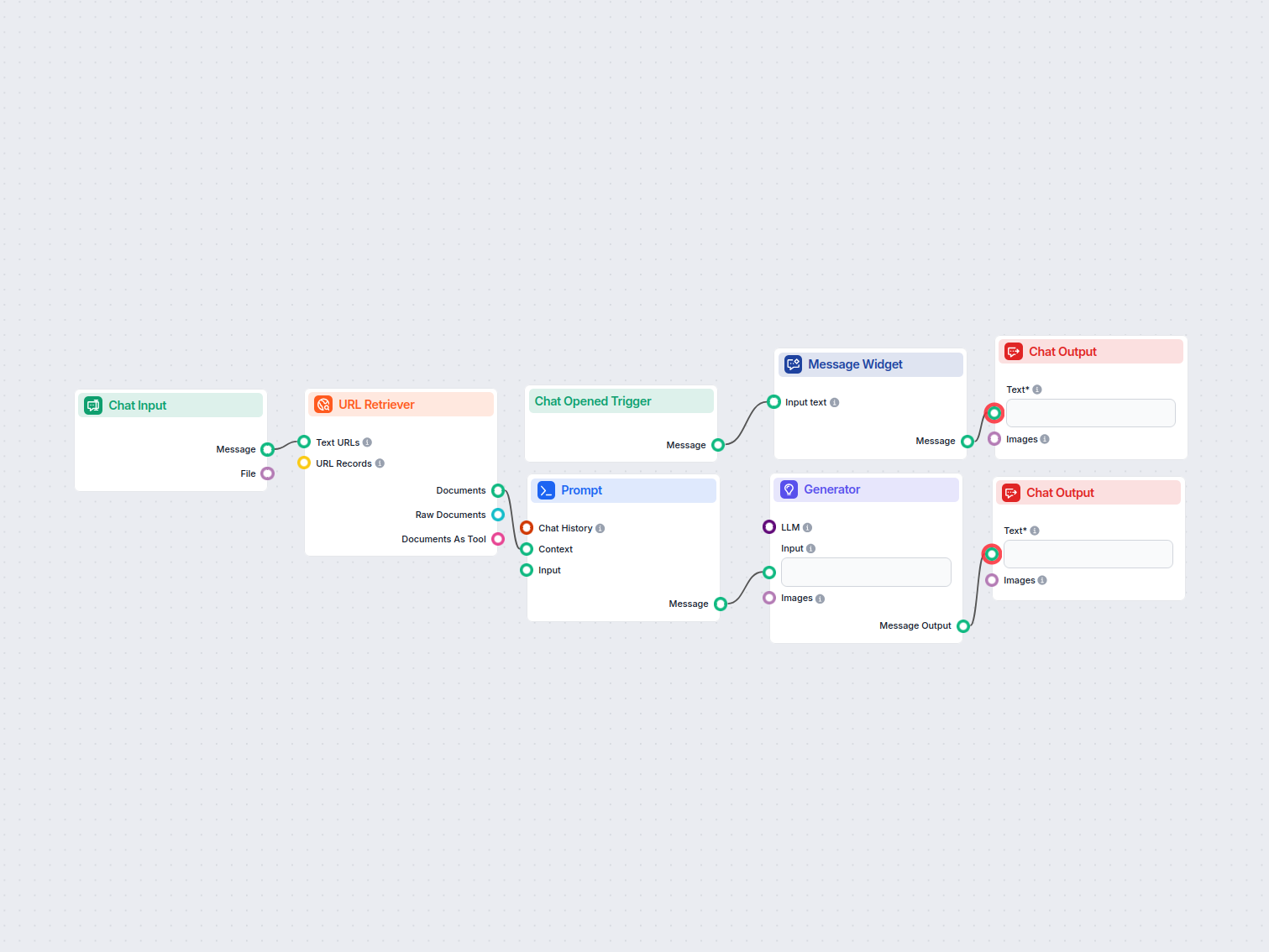Related Articles Paragraph Generator
Automatically generates a short, engaging paragraph for your website that includes links to the most relevant related articles. This AI-powered workflow analyzes your site’s content to recommend further reading, helping increase user engagement and session duration.


Flows
How the AI Flow works
- User Input Collection.
- Collect the topic or URL from the user to determine the current page context.
- Retrieve Relevant Articles.
- Search the website’s knowledge base for the most relevant articles related to the provided topic or URL.
- Analyze and Extract Keywords.
- Extract key topics and keywords from the retrieved articles to identify the best candidates for linking.
- Generate Related Articles Paragraph.
- Use AI to generate a short, easy-to-read paragraph that integrates links to the most relevant articles, encouraging further exploration.
- Display Generated Paragraph.
- Present the generated paragraph with embedded article links to the user for immediate use on the website.
Prompts used in this flow
Below is a complete list of all prompts used in this flow to achieve its functionality. Prompts are the instructions given to the AI model to generate responses or perform actions. They guide the AI in understanding user intent and generating relevant outputs.
Prompt
Prompt to instruct LLM to write a readable, concise paragraph with markdown links to related articles for a web page.
you are skilled copywriter with strong focus on easy readability of text you write.
Don't use sophisticated words - it should be easy to understand.
Focus on detailed information. Don't use phrases like "In todays fast changing world...", "In today's complex...", "is a crucial step", "plays significant role", "fast-paced...", "pivotal role", "In the ever-evolving landscape of" or "In the realm of ...", always cut to the point without useless conclusions or intros.
Write paragraph for web page with url "{input}".
Paragraph should give hint to visitor what he should read as next after reading the current page.
For each related article pick the most relevant keyword to the article and make it a link (markdown format).
Incorporate in the paragraph links to each article in the list.
In Context is list of the most relevant pages to current page, current page can be included as well.
Don't list current page in the paragraph as related article.
--- MOST RELATED ARTICLES ---
{context}
--- END OF RELEVANT ARTICLES ---
Write paragraph in the same language as language of related documents.
Paragraph should have 2 sentences for each related document.
If there are no related articles, return just one space character as the answer
Prompt
Prompt to generate a list of useful keywords and context for further LLM steps.
Useful keywords:
{input}
---
{context}
Components used in this flow
Below is a complete list of all components used in this flow to achieve its functionality. Components are the building blocks of every AI Flow. They allow you to create complex interactions and automate tasks by connecting various functionalities. Each component serves a specific purpose, such as handling user input, processing data, or integrating with external services.
ChatInput
The Chat Input component in FlowHunt initiates user interactions by capturing messages from the Playground. It serves as the starting point for flows, enabling the workflow to process both text and file-based inputs.
Document Retriever
FlowHunt's Document Retriever enhances AI accuracy by connecting generative models to your own up-to-date documents and URLs, ensuring reliable and relevant answers using Retrieval-Augmented Generation (RAG).
Prompt Component in FlowHunt
Learn how FlowHunt's Prompt component lets you define your AI bot’s role and behavior, ensuring relevant, personalized responses. Customize prompts and templates for effective, context-aware chatbot flows.
Generator
Explore the Generator component in FlowHunt—powerful AI-driven text generation using your chosen LLM model. Effortlessly create dynamic chatbot responses by combining prompts, optional system instructions, and even images as input, making it a core tool for building intelligent, conversational workflows.
Keyword Frequency Evaluator
Analyze your texts to discover the most frequent and significant keywords using the Keyword Frequency Evaluator component in FlowHunt. Automatically extract top keywords, filter out common stopwords, and fine-tune results based on frequency, word length, and keyword overlap—ideal for text analysis, information extraction, and content summarization workflows.
Chat Output
Discover the Chat Output component in FlowHunt—finalize chatbot responses with flexible, multi-part outputs. Essential for seamless flow completion and creating advanced, interactive AI chatbots.
Message Widget
The Message Widget component displays custom messages within your workflow. Ideal for welcoming users, providing instructions, or showing any important information, it supports Markdown formatting and can be set to appear only once per session.
Chat Opened Trigger
The Chat Opened Trigger component detects when a chat session starts, enabling workflows to respond instantly as soon as a user opens the chat. It initiates flows with the initial chat message, making it essential for building responsive, interactive chatbots.
Flow description
Purpose and benefits
This workflow is designed to automatically generate a short, engaging paragraph for a given webpage or topic. The generated paragraph contains links to the most relevant articles on your website, helping visitors seamlessly navigate to related content. This automation is especially useful for scaling the creation of “Related Articles” sections, boosting user engagement, and improving SEO by interlinking your content efficiently and consistently.
Workflow Overview
The process can be summarized in the following steps:
User Interaction & Welcome
- When the chat is opened, the user is greeted with a welcome message. This message explains the tool’s purpose and prompts the user to enter a topic or URL.
Input Handling
- The user provides a topic or a webpage URL via a chat input widget.
Initial Document Retrieval
- The system retrieves the most relevant document(s) from your website’s knowledge base using the user’s input as a query. This gives the workflow an initial context about the topic.
Prompt Construction (Contextualization)
- A prompt template combines the user’s input and the retrieved document(s) to create a context-aware query.
Related Articles Retrieval
- Using the contextualized prompt, the system retrieves up to 6 of the most relevant articles (excluding the current page) using a second document retriever. The content structure (H1-H4) is considered to ensure relevance.
Paragraph Generation Prompt
- A refined prompt template is prepared for the AI generator. This template instructs the language model to:
- Write as a skilled, easy-to-understand copywriter.
- Avoid generic or overly sophisticated language.
- Write a paragraph with 2 sentences per related article.
- Turn the most relevant keyword for each article into a markdown link.
- Exclude the current page from the related articles.
- Output in the same language as the related articles.
- If there are no related articles, return a single space character.
- A refined prompt template is prepared for the AI generator. This template instructs the language model to:
Keyword Extraction
- The retrieved related articles are analyzed for keyword frequency, identifying the most useful keywords to be used as anchor text for links in the final paragraph.
Final Prompt Assembly
- Another prompt template incorporates the top keywords and the context for the AI generator.
AI Generation
- A text generation model (LLM) processes the prompt and outputs the final paragraph containing embedded links to related articles.
Output Display
- The generated paragraph is displayed to the user as a chat message, ready to be used on your website.
Workflow Structure (Table)
| Step | Component | Purpose |
|---|---|---|
| 1. Chat Opened | ChatOpenedTrigger + MessageWidget | Greet user and introduce functionality |
| 2. User Input | ChatInput | Capture topic or URL from user |
| 3. Retrieve Main Document | DocumentRetriever (1 doc) | Find most relevant document for context |
| 4. Build Initial Prompt | PromptTemplate | Combine input and context for further retrieval |
| 5. Retrieve Related | DocumentRetriever (6 docs) | Get up to 6 most relevant related articles |
| 6. Prepare Paragraph Prompt | PromptTemplate (detailed instructions) | Instruct AI on how to generate the paragraph with links |
| 7. Extract Keywords | KeywordFrequencyEvaluator | Find top keywords for anchor text |
| 8. Assemble Final Prompt | PromptTemplate | Merge keywords and context for AI generation |
| 9. Generate Paragraph | Generator (LLM) | Generate the related articles paragraph |
| 10. Display Output | ChatOutput | Present the result to the user |
Why This is Useful
Scalability:
Automates the creation of related articles paragraphs for any page or topic, saving manual editorial time.Consistency:
Ensures every page receives a consistently formatted, high-quality related articles section.SEO & Engagement:
Smart internal linking through relevant keywords as anchor text helps with SEO. Engaging, contextual suggestions keep users browsing your site longer.Localization:
The paragraph is generated in the same language as the related articles, supporting multilingual sites.Customization:
Prompts are carefully crafted to avoid generic filler text and to focus on actionable, helpful suggestions for readers.
Ideal Use Cases
- Blogs or news sites wanting automatic “What to Read Next” paragraphs.
- E-commerce sites suggesting related guides or product pages.
- Knowledge bases or documentation sites guiding users to related help topics.
- Any website with a large content library seeking to improve navigation and SEO with minimal manual work.
Automation Flow Diagram (Simplified)
flowchart LR
A[User opens chat] --> B[Welcome message]
B --> C[User enters topic or URL]
C --> D[Retrieve main document for context]
D --> E[Build context-aware prompt]
E --> F[Retrieve related articles (up to 6)]
F --> G[Extract top keywords]
G --> H[Create AI prompt with links/keywords]
H --> I[AI generates paragraph]
I --> J[Display paragraph to user]
Summary
This workflow leverages document retrieval, prompt engineering, keyword analysis, and generative AI to automate the creation of high-quality, linked “Related Articles” paragraphs. It is a robust solution for any content-rich website looking to scale and optimize internal linking and user engagement with minimal effort.
Let us build your own AI Team
We help companies like yours to develop smart chatbots, MCP Servers, AI tools or other types of AI automation to replace human in repetitive tasks in your organization.
Learn more

AI Content Idea Generator
Generate unique content ideas and summaries using AI by researching top Google results for any keyword. Ideal for content marketers and creators to quickly disc...

YouTube Description Generator from URL
Automatically generate SEO-optimized YouTube video titles, descriptions, and hashtags from any webpage URL. Perfect for marketers, content creators, and busines...

Turn Any URL Into an Engaging X Post
Automatically transforms the content of any provided URL into a concise, engaging post suitable for X (Twitter), helping marketers and creators quickly boost th...
